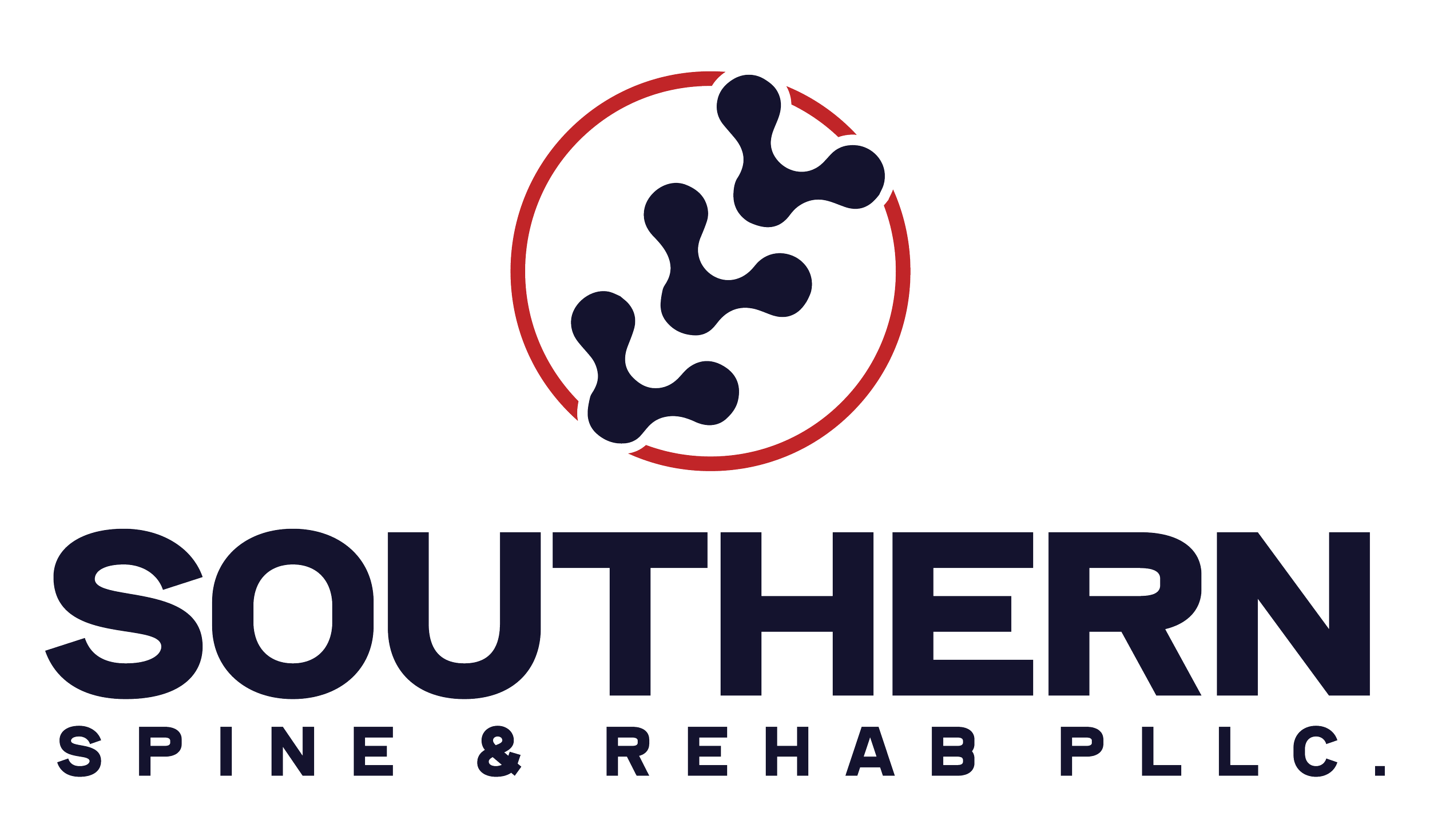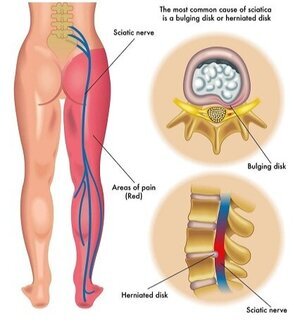Lumbar Spine Disc Herniations: What You Need to Know
Disc herniations are one of the most common conditions treated by Chiropractors. Chiropractors provide extremely safe, effective, and non-invasive treatments for disc herniations that result in great patient outcomes.
The lumbar spine is made up of 5 vertebrae.
Image Courtesy of Physiopedia (https://www.physio-pedia.com/File:Lumbar_vertebra.jpg)
It is extremely common for a herniated disc to press against, or inflame, a nearby nerve causing pain to radiate along the length of the nerve.
Image Courtesy of Mayo Clinic (https://www.mayoclinic.org/diseases-conditions/herniated-disk/symptoms-causes/syc-20354095)
These symptoms commonly radiate down into the top of the buttock and can go as far as the point of your toes.
Here are some characteristics of lumbar disc herniation pain:
Leg pain. The leg pain is typically worse than low back pain. If the pain radiates along the path of the large sciatic nerve in the back of the leg, it is referred to as sciatica or a radiculopathy.
Nerve pain. The most noticeable symptoms are usually described as nerve pain in the leg, with the pain being described as searing, sharp, electric, radiating, or piercing.
Variable location of symptoms. Depending on variables such as where the disc herniates and the degree of herniation, symptoms may be experienced in the low back, buttock, front or back of the thigh, the calf, foot and/or toes, and typically affects just one side of the body.
Neurological symptoms. Numbness, a pins-and-needles feeling, weakness, and/or tingling may be experienced in the leg, foot, and/or toes.
Image Courtesy of Yorkville Sports Medicine Clinic (https://www.yorkvillesportsmed.com/blog/essentials-of-disc-herniation-bulging-slip-discs)
Foot drop. Neurological symptoms caused by the herniation may include difficulty lifting the foot when walking or standing on the ball of the foot, a condition known as foot drop.
Lower back pain. Lower back pain may be present, but not always. The low back pain may be described as dull or throbbing, and may be accompanied by stiffness. If the herniated disc causes lower back muscle spasm, the pain may be alleviated somewhat by a day or two of relative rest, applying ice or heat, sitting in a supported recliner or lying flat on the back with a pillow under the knees.
Pain that worsens with movement. Pain may follow prolonged standing or sitting, or after walking even a short distance. A laugh, sneeze, or other sudden action may also intensify the pain.
Pain that worsens from hunching forward. Many find that positions such as slouching or hunching forward in a chair, or bending forward at the waist, makes the leg pain markedly worse.
Quick onset. Lumbar herniated disc pain usually develops quickly, although there may be no identifiable action or event that triggered the pain.
Rare but Dangerous Symptoms of Lumbar Spine Herniated Disc
A loss of bladder or bowel control, lower back pain, numbness in the saddle area, and/or weakness in both legs are signs of a rare but serious condition called cauda equina syndrome.
This pressure and swelling of the nerves at the end of the spinal column can lead to paralysis and other permanent impairments if treatment is delayed. Emergency medical treatment, which may include testing and surgery, is needed if these symptoms occur.
Symptoms attributed to a herniated lumbar disc may have other causes. A thorough physical exam, medical evaluation, and sometimes diagnostic imaging tests are commonly needed to determine the source of pain and other symptoms.
For educational purposes only. This is not medical advice and is not intended to serve as a diagnostic tool. Please be evaluated by your local healthcare professional. If you would like that to be Dr. Pedigo, call or book online.
In Health,
Dr. Kolten K. Pedigo, DC, MS
Southern Illinois Sports Doctor
Marion, IL
Reference:
Härtl, Roger. “Lumbar Herniated Disc Symptoms.” Spine, www.spine-health.com/conditions/herniated-disc/lumbar-herniated-disc-symptoms?fbclid=IwAR0F9_YrfctADQXRgm7oZ7M_KHxvjt7azD9VKnKOBr1lJcB3cFrT4EoYElU.



